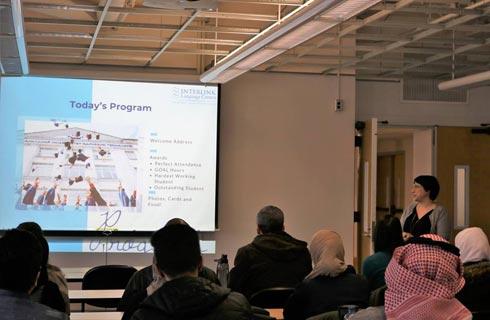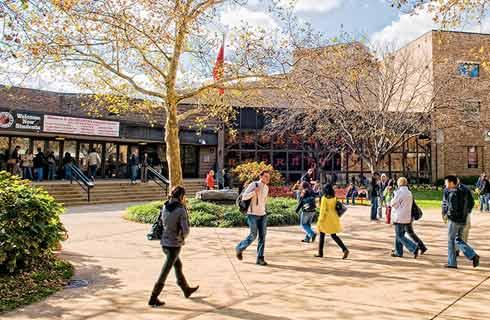- IDP China>
- 课程库>
- 工程与技术>
- 物理科学>
- 地球科学>
- Doctor of Philosophy in Earth and Climate Sciences - Geodynamics, Crustal Studies and Earth Rheology
Doctor of Philosophy in Earth and Climate Sciences - Geodynamics, Crustal Studies and Earth Rheology

学历文凭
Ph.D.

专业院系
Earth and Climate Sciences

开学时间

课程时长

课程学费

国际学生入学条件
Applicants to our graduate program commonly have a Bachelor’s degree in Earth Sciences or closely related discipline, but the multidisciplinary nature of our program allows for entry from other backgrounds as well. Students entering the graduate program in Earth and Climate Sciences typically have completed at least one year of chemistry, physics, and calculus, as well as several courses in Earth or environmental sciences beyond the introductory level. Students who have not completed these basic requirements may be admitted, but may be required to complete specific courses to fulfill deficiencies. Deficiencies are determined on an individual basis by the student’s chosen advisor, and depend on the research topic and subdiscipline chosen by the student.
Official transcript of all previous college or university work
The School has no formal minimum GRE or GPA requirements.
Before submitting an application, students should contact individual faculty members within the School to determine if:
their interests align with current faculty research programs
if individual faculty are interested in mentoring additional students
what resources are available to pursue research activities
IELTS - 6.5
TOEFL IBT - 80
Duolingo English Test - 105
IDP—雅思考试联合主办方

雅思考试总分
6.5
- 雅思总分:6.5
- 托福网考总分:80
- 托福笔试总分:550
- 其他语言考试:Pearson Test of English Academic - 60
CRICOS代码:
申请截止日期: 请与IDP联系 以获取详细信息。
课程简介
Rocks and landforms at Earth's surface, potentially hazardous volcanic and seismic activity, the response of Earth's surface to icecaps that come and go with changing climate, and the slow but inexorable movement of continents all result from the interaction of physical and chemical processes taking place throughout Earth's crust and mantle. With international interest and funding directed towards addressing both basic research questions and applied problems, the broad fields of geodynamics, structural geology, mineralogy and petrology are mainstays of geoscience research.<br><br>Our ongoing and new capacity for microanalysis, including optical microscopy, energy- and wavelength-dispersive spectrometry, cathodoluminescence, and electron backscatter diffraction, along with grain- through orogen-scale numerical modeling and supercomputer applications, allow us to develop groundbreaking ideas related to coupled physical and chemical processes that shape Earth's surface and drive evolution of its lithosphere.<br><br>Our research program spans spatial scales from micrometers in individual mineral grains (deformation mechanisms, mineral chemistry, microstructures) to hundreds of kilometers in mountain belts (tectonic history, magmatism, structural development, and coupling of surface and deep processes). We study events that occurred from 4 billion years ago at the dawn of Earth's history to those active today. We make observations of the natural world, using field, analytical, geochemical and geophysical datasets, and explain these observations using basic physical and chemical principles.<br><br>We employ numerical and analogue modeling to test our explanations and conceptual predictions. Our most active research threads center on relating strain to surface evolution, mountain-scale dynamics, mid- to lower-crustal rheology, elastic anisotropy, earthquake geology, microstructural evolution, magma dynamics, pressure-temperature and chemical evolution of metamorphic rocks, stable isotope fractionation and mineral paragenesis
相关申请
 预科
预科 奖学金
奖学金 实习机会
实习机会 在校学习
在校学习 跨境学习
跨境学习 校园授课-线上开始
校园授课-线上开始 在线/远程学习
在线/远程学习
开学时间&学费
学费信息仅供参考,请与IDP联系以获取详细信息
| 开学时间 | 时长 | 学费 | 地点 |
|---|
本校相关课程

动物学理学硕士
学历文凭
Masters Degree
开学日期
课程费用总额


野生动物生态学哲学博士
学历文凭
Ph.D.
开学日期
课程费用总额


野生动物保护硕士
学历文凭
Masters Degree
开学日期
课程费用总额


野生动物生态学理学硕士
学历文凭
Masters Degree
开学日期
课程费用总额


西班牙语教学文学硕士
学历文凭
Masters Degree
开学日期
课程费用总额


Master of Social Work
学历文凭
Masters Degree
开学日期
课程费用总额

其他相关课程

地球科学哲学博士
 滑铁卢大学
滑铁卢大学学历文凭
Ph.D.
开学日期
课程费用总额


地球科学(荣誉)理学学士
 圣弗朗西斯泽维尔大学
圣弗朗西斯泽维尔大学学历文凭
Bachelor Degree with Honours
开学日期
课程费用总额


环境地球科学(荣誉)理学学士
 阿卡迪亚大学
阿卡迪亚大学学历文凭
Bachelor Degree
开学日期
课程费用总额


环境地球科学理学学士
 阿卡迪亚大学
阿卡迪亚大学学历文凭
Bachelor Degree
开学日期
课程费用总额


地球科学理学硕士
 布鲁克大学
布鲁克大学学历文凭
Masters Degree
开学日期
课程费用总额


哲学地质科学博士
 曼尼托巴大学
曼尼托巴大学学历文凭
Ph.D.
开学日期
课程费用总额










 美国
美国
